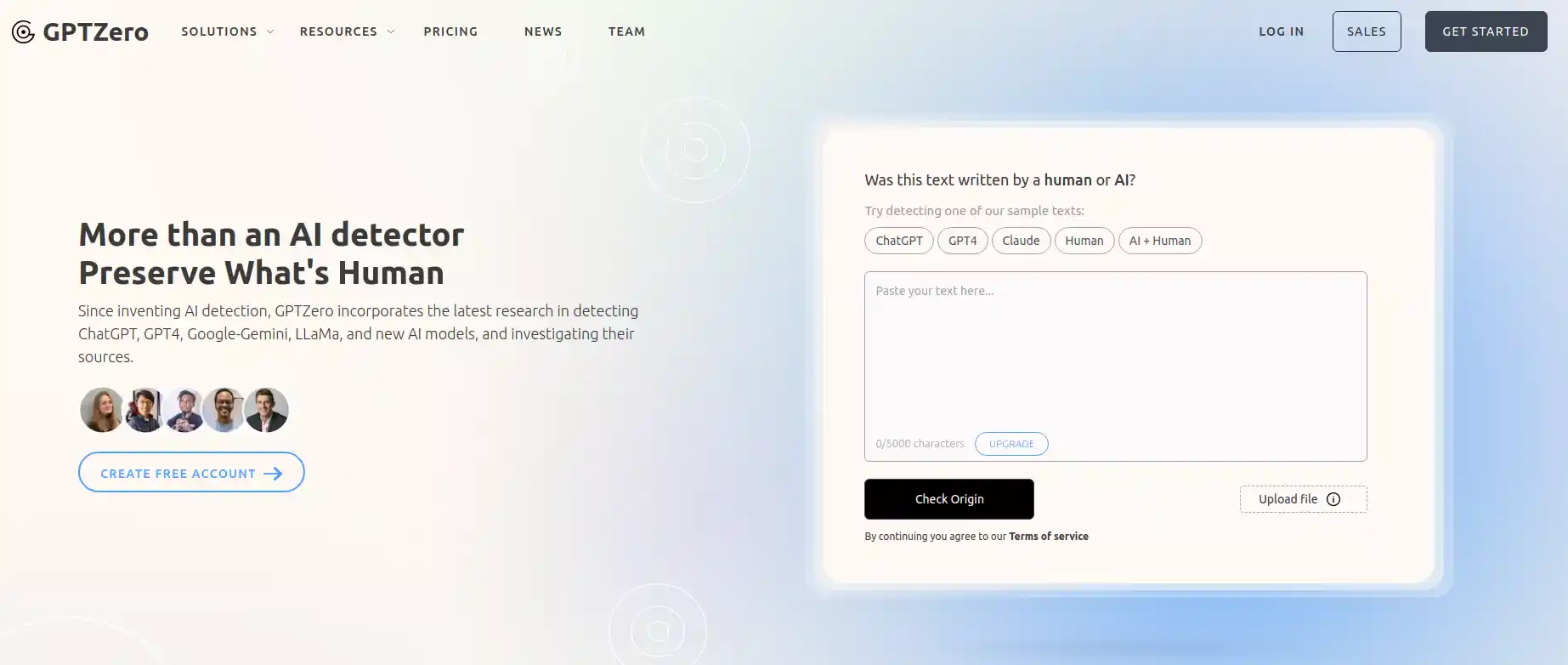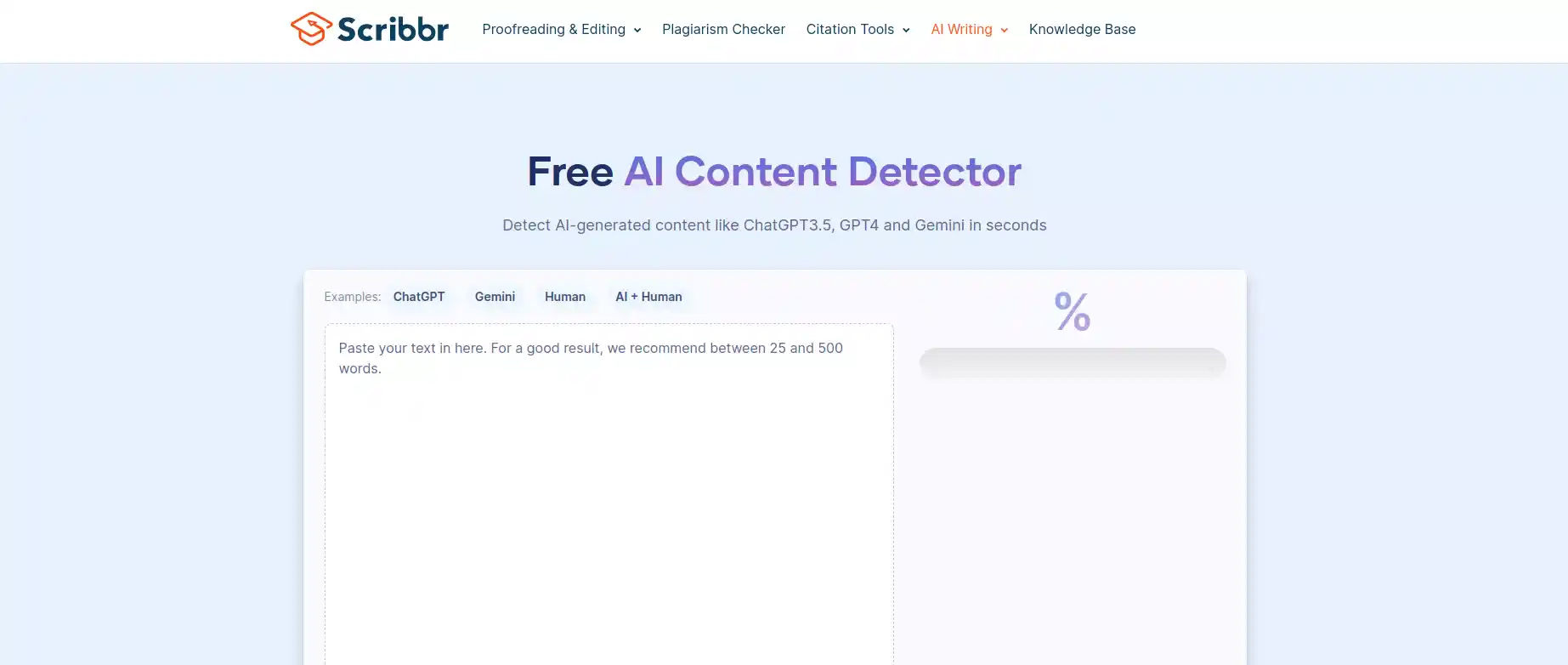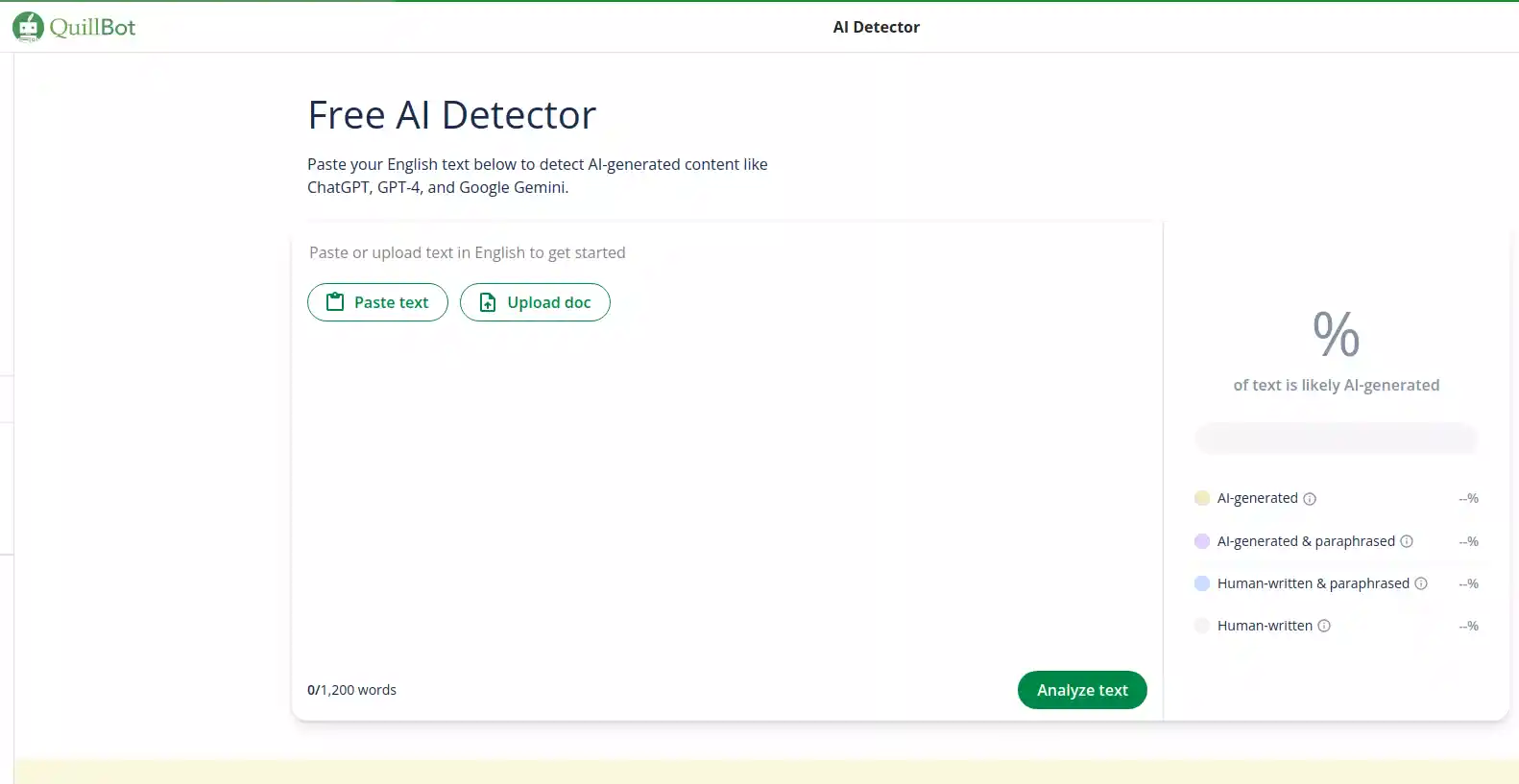Table of Contents
The rise of Artificial Intelligence (AI) has revolutionized content creation. While AI can churn out high-quality content quickly, it can sometimes lack originality and accuracy. As AI continues to evolve, distinguishing human-written content from AI-generated text becomes increasingly challenging. This is where AI detection tools come in.
What is an AI Content Detection Tool?
An AI content detection tool is a software program that analyzes text to identify whether it was written by a human or generated by AI. These tools help ensure the authenticity and credibility of content, especially in fields like journalism, academia, and marketing. However, there are also AI tools to bypass AI detection, which can manipulate text to evade being flagged or filtered by these detection systems. Among the best AI tools available, AI content detection tools stand out for their ability to maintain the integrity of written material.
Top 6 Free AI Detectors
Here’s a breakdown of the top 5 free AI detection tools in 2024, along with a brief introduction, to their pros and cons:
1. ZeroGPT :

ZeroGPT is a free AI content detection tool that focuses on identifying factual inconsistencies, a common red flag for AI-generated text.
- Pros:
- Analyzes for factual inconsistencies, helping to spot nonsensical information or illogical connections.
- Free plan is available, making it accessible for casual users.
- Cons:
- Limited analysis features compared to paid tools. ZeroGPT may not offer detailed reports or breakdowns of the AI probability score.
2. Originality.ai :

Originality.ai offers a free plan with a limited number of analyses per month. It allows you to choose between different detection models based on your risk tolerance.
- Pros:
- Offers various analysis models (cautious, balanced, bold) to tailor detection to your needs.
- Free plan available for a limited number of checks.
- Cons:
- Extensive content analysis or ongoing use may require a paid plan.
3. Scribbr (free version) :

Scribbr offers a free version of their AI content detector with a simple interface, ideal for beginners.
- Pros:
- User-friendly interface, easy to navigate for those new to AI detection tools.
- Free plan available to test the tool before committing to a paid version.
- Cons:
- Limited features compared to Scribbr’s paid version. The free plan might offer basic detection without in-depth analysis or reporting functionalities.
Note: Turnitin is a powerful tool, but it’s primarily used by educational institutions and not available for free to the general public.
5 AI Tools for Content Creation Enhance From Idea to Execution
4. Quillbot’s AI Content Detector :

Developed by a reputable paraphrasing tool company, Quillbot’s AI Content Detector might be particularly adept at identifying AI-rewritten content.
- Pros:
- Potentially effective at identifying AI-rewritten content due to its connection to Quillbot’s paraphrasing technology.
- Free plan available to try the tool and see if it suits your needs.
- Cons:
- May be limited in scope compared to dedicated AI content detector tools. It might focus primarily on identifying paraphrased content and might not have the same level of sophistication for broader AI-generated text detection.
5. Copyleaks (free plan) :

Copyleaks offers a free plan with limited analysis but provides sentence-level detection of potentially AI-generated content.
- Pros:
- Free plan with basic features, including highlighting potentially AI-written sections within the text.
- Offers a granular view of the text, pinpointing areas for concern.
- Cons:
- Freemium model, most advanced features require a paid subscription. The free plan might limit the number of analyses or content length.
6. Hugging Face :

Hugging Face is an open-source platform with various AI models for text analysis, some with free access. It offers a high degree of customization but requires technical knowledge.
- Pros:
- Open-source platform with various AI models for exploration and customization (for users comfortable with technical aspects).
- Offers flexibility in choosing the specific AI model used for analysis (if you have technical expertise).
- Cons:
- Requires technical knowledge to navigate and use effectively. Not as user-friendly as other options on this list and might be better suited for developers or those with experience in AI models.
What is the use of AI Content and Plagiarism Detectors
For businesses, low-quality AI-generated content or plagiarized work can be detrimental. Failing to identify substandard content can lead to several issues:
- Reputation Damage: Discovering plagiarized work can immediately tarnish a company’s reputation.
- Google Penalties: Google may penalize websites for low-quality content, especially with evolving E-E-A-T (Expertise, Authoritativeness, Trustworthiness) standards.
- Financial Loss: Overpaying writers who haven’t produced original work can waste resources.
- Copyright Issues: There’s a risk of future legal problems related to copyright infringement.
- Mediocre Content: Content that is merely adequate instead of outstanding can fail to engage or satisfy an audience.
AI content detectors are invaluable in addressing these challenges by:
- Identifying AI-Generated Content: Estimating if the content was created using AI writing tools.
- Detecting Plagiarism: Finding copied work and ensuring originality.
- Evaluating Originality: Assessing the percentage of original content in a piece.
While using AI extensively has its risks, integrating it thoughtfully with human writing practices can mitigate these issues. AI content detectors play a crucial role in understanding and evaluating content, whether it’s self-authored or created by others.
For students, content creators, and professionals who think, “Can someone help me with my homework or content verification?”, these tools offer a reliable way to ensure that the content meets quality and originality benchmarks.
How to Select the Best Free AI Detection Tool
Choosing the right free AI detection tool depends on your specific needs. Here are some key factors to consider:
Accuracy: This is paramount. Look for a tool with minimal false positives (mistakenly identifying human-written content as AI-generated) and negatives (missing AI-generated content).
Language Support: If you deal with content in multiple languages, ensure the tool can detect AI-generated content across those languages (e.g., English, Spanish, French).
Scalability: If you handle large volumes of content, choose a tool that efficiently analyzes big data sets without sacrificing accuracy.
Customization: Ideally, the tool allows you to tailor the analysis process to your needs. For example, you might want to prioritize identifying factual inconsistencies or focus on specific AI models.
Reporting Options: Consider a tool that provides a comprehensive analysis history, allowing you to track trends and improve your content creation process.
Conclusion
AI detection tools are no longer a luxury, but a necessity in today’s content landscape. As AI-generated content becomes more sophisticated, these tools play a crucial role in safeguarding authenticity and upholding ethical standards. Whether you’re a journalist, academic, content creator, or simply someone who values reliable information, AI detectors empower you to make informed decisions about the content you consume and create.
Consider your specific needs when choosing a free or paid tool. Prioritize accuracy, language support, and customization features to ensure the detector aligns with your workflow. By leveraging these valuable resources, you can confidently navigate the AI era, fostering trust and transparency with original, reliable, and engaging content.
Related Reads
5 Best AI Resume Builders or CV Creators in 2024